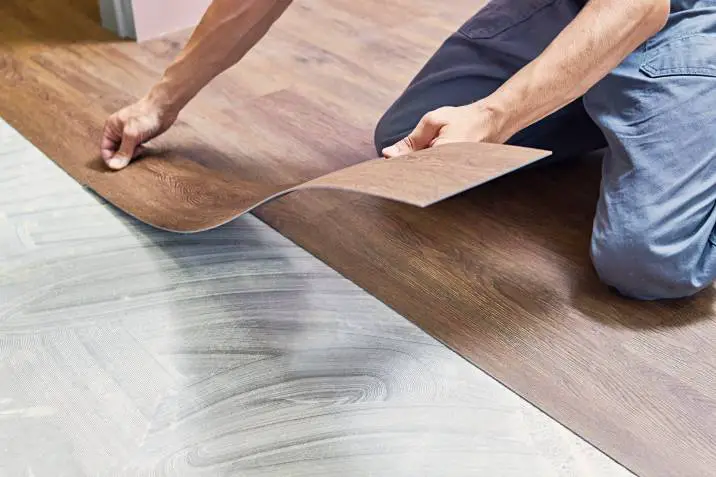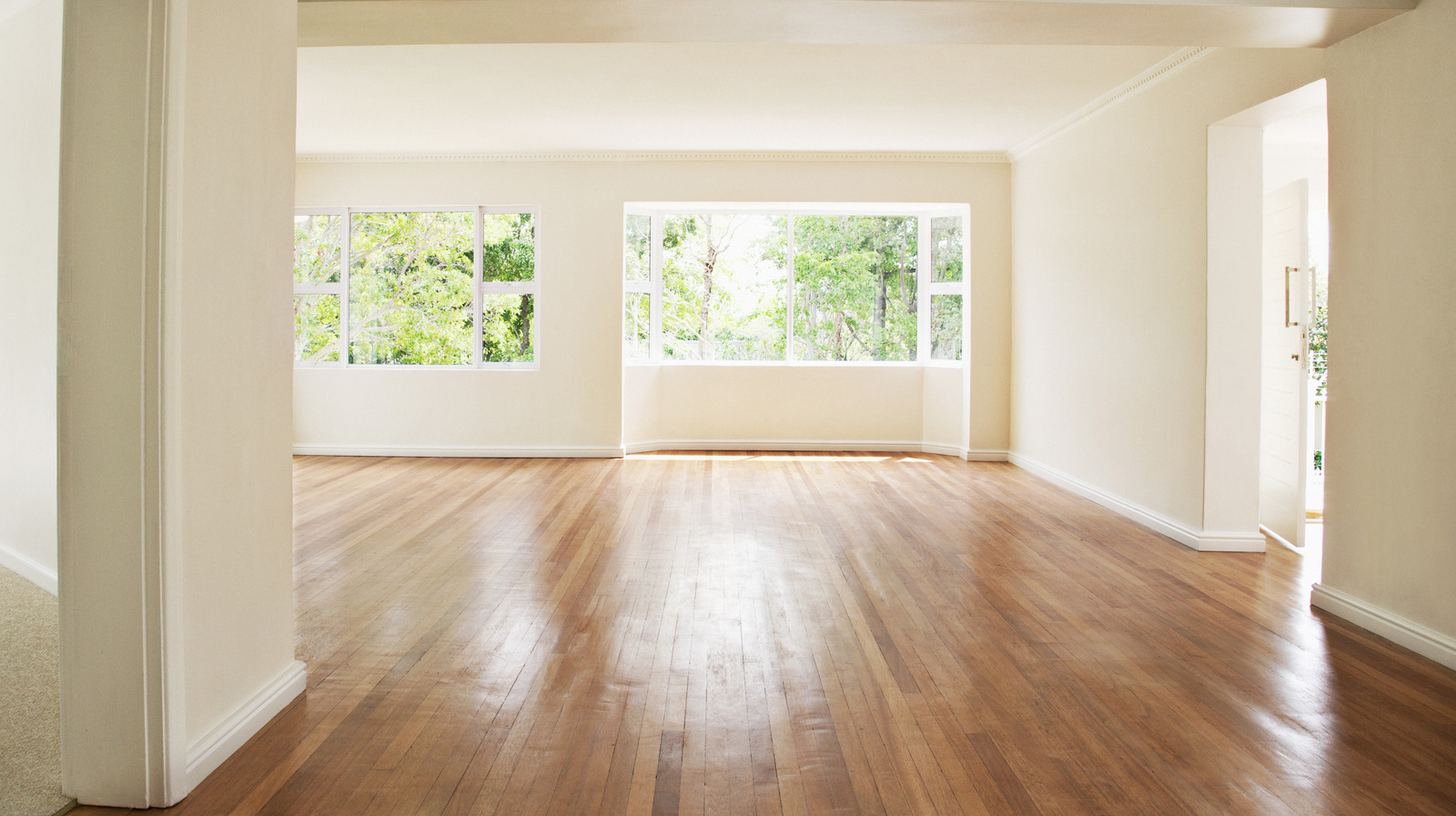Laminate flooring is a popular choice among homeowners due to its durability and aesthetic appeal. However, many people encounter a common issue where their laminate flooring feels sticky. This unwelcome tackiness can not only be bothersome but also potentially hazardous, leading to slips and falls.
In this guide, we will delve into the reasons why your laminate flooring feels sticky and provide practical solutions to fix this issue. Let’s create a comfortable and safe environment in your home.
Maintaining the condition of your laminate flooring is paramount. Not only does it enhance the overall appearance of your home, but it also ensures the longevity of the flooring. A well-maintained laminate floor is visually appealing, and it also offers you better value for money as it lasts longer.
However, if not properly taken care of, laminate flooring can become sticky over time. This stickiness can be a nuisance and a potential safety hazard, causing slips and falls.
Therefore, understanding the causes of this problem and learning how to fix it is crucial to maintaining the condition and safety of your laminate flooring.
Understanding Why Laminate Flooring Feels Sticky
Common Causes of Stickiness in Laminate Flooring
1. Incorrect or Excessive Use of Cleaning Products
The most common cause for sticky laminate flooring is the incorrect or excessive use of cleaning products. When too much cleaner is applied, or if the cleaner is not suitable for laminate floors, it can leave behind a sticky residue. This residue attracts and traps dirt, making the floor feel sticky to the touch.
2. Spills and Stains
Another common reason your laminate floor feels sticky could be due to spills and stains. If liquid substances such as juice, soda, or wine are spilled on the floor and not cleaned up immediately, they can leave a sticky residue.
3. Wax Build-up
Over time, wax build-up can cause laminate floors to feel sticky. Wax-based cleaners and polishes, although they give a nice shine to your floor initially, can accumulate over time and make the surface feel sticky.
4. Humidity and Moisture
High levels of humidity and moisture can also make laminate floors sticky. In areas with high humidity or in homes without proper ventilation, moisture can get trapped between the laminate pieces, causing them to feel sticky.
The Role of Cleaning Methods and Products Used
The cleaning method and products you use play a pivotal role in maintaining the condition of your laminate flooring. It’s essential to choose the right products that are specifically designed for laminate flooring to avoid any adverse effects.
When cleaning, it’s advisable to use a damp mop instead of a wet one, as excessive water can seep into the seams of the laminate, causing it to swell and get sticky.
However, even the most suitable cleaning products can leave behind a residue if used excessively. It is crucial to use the recommended amount and to ensure all product is thoroughly removed after cleaning.
Moreover, it’s important to clean spills immediately to prevent them from leaving a sticky residue. Some homeowners use wax-based cleaners and polishes for a shiny finish, but these products can accumulate over time leading to a sticky surface.
Therefore, if you prefer a glossy floor, opt for laminate-safe floor shine products instead.
Effects of Sticky Laminate Flooring

Aesthetic Impairments
Sticky laminate flooring not only affects the functionality of your floor but also its aesthetics. The persistent stickiness can attract dirt and dust, leading to grime build-up.
This accumulation of debris tarnishes the overall appearance of the floor, making it look dull and unclean. Furthermore, footprints and markings become more visible and harder to remove.
The sticky residue can also diminish the clarity and brightness of the floor’s design, detracting from the original appeal and beauty of the laminate.
These aesthetic impairments, induced by stickiness, can significantly diminish the visual appeal of your space, resulting in a less inviting and comfortable environment. It’s therefore crucial to address the stickiness as soon as it occurs to maintain the aesthetic integrity of your laminate flooring.
Potential Damage Over Time
As time progresses, the effects of a sticky residue on laminate flooring can lead to more than just aesthetic impairment. The constant stickiness can gradually degrade the protective coating of the laminate, exposing the underlying material to damage. This could lead to the laminate becoming warped, cracked, or discolored.
Moreover, the accumulation of dirt and grime can scratch the surface, leaving permanent marks. In severe cases, the sticky residue could seep into the seams and joints of the laminate planks, causing them to lift or buckle.
This may lead to a need for extensive repairs or even complete replacement of the flooring. Furthermore, the increased friction caused by the stickiness can lead to premature wear and tear.
Health Implications
While it might not seem immediately apparent, there are indeed potential health implications associated with sticky residue on laminate flooring. The accumulation of dirt and grime can lead to an increased number of allergens present in the environment.
These airborne particles can trigger allergic reactions in susceptible individuals, leading to symptoms like sneezing, coughing, and even asthma attacks.
Moreover, if the sticky residue is the result of a chemical substance or cleaning product, there could be harmful fumes or volatile organic compounds (VOCs) released.
These chemicals could cause respiratory issues, skin irritation, or eye discomfort. In extreme cases, the sticky substance might even promote the growth of molds or bacteria if left untreated, posing further risks to the household’s health.
How to Fix Sticky Laminate Flooring

Step 1: Gather Your Materials
Before starting the cleaning process, gather all the necessary materials. This includes a soft, damp cloth or mop, a bucket, mild detergent or a laminate floor cleaner, and a soft, dry towel.
Step 2: Prepare Your Cleaning Solution
Fill a bucket with warm water and add a small amount of mild detergent or a specially formulated laminate floor cleaner. Stir the mixture until the detergent is fully dissolved.
Step 3: Apply the Cleaning Solution
Dampen your cloth or mop with the cleaning solution. Be careful not to overwet the mop or cloth, as too much water can seep into the seams of the laminate and cause damage.
Step 4: Wipe the Sticky Area
Working in small sections, thoroughly wipe the sticky area. Apply moderate pressure to remove the sticky residue but avoid scratching the surface.
Step 5: Dry the Floor
After cleaning, immediately dry the floor with a soft, dry towel. This will prevent any leftover water from seeping into the laminate.
Step 6: Repeat as Necessary
If the stickiness persists, repeat the process. For stubborn spots, a gentle scrub with a soft-bristled brush may be necessary. Always follow up with a dry towel to remove excess moisture.
Step 7: Implement Preventive Measures
Finally, to prevent future stickiness, ensure to clean up spills immediately and avoid using excessive water or harsh chemicals on your laminate floor. Regular sweeping or vacuuming can also keep dirt and grime from building up.
Related Topics:
Recommendations for Cleaning Products and Tools
When it comes to choosing cleaning products for your laminate floor, opt for a mild, pH-neutral detergent or a cleaner specially formulated for laminate surfaces. Harsh, acidic, or alkaline cleaners can cause damage and dull the finish of your floor.
For tools, a soft microfiber mop or cloth is ideal for cleaning laminate floors. These materials can effectively clean and capture dirt without scratching the surface. A soft, dry towel is necessary for drying the floor after cleaning to prevent water damage.
In case of stubborn spots, a soft-bristled scrub brush can be gently used. However, avoid wire brushes or abrasive scrubbing pads as they can scratch or damage the laminate surface.
Regular maintenance can be achieved through a simple sweeping or vacuuming routine. For vacuuming, ensure to use a model that has a hard floor setting to avoid possible scratching.
Tips for Preventing Future Stickiness on Laminate Floors
Preventing future stickiness on your laminate floors solely depends upon consistent and correct cleaning habits. Always clean up spills immediately to prevent them from solidifying and causing stickiness.
Avoid using excessive water when cleaning as it may seep into the laminate and cause damage. Use mild, pH-neutral detergents or cleaners specifically designed for laminate floors to avoid compromising the finish of your floor.
Regularly sweep or vacuum your laminate floors to keep dirt and grime from accumulating. If using a vacuum cleaner, ensure it has a hard floor setting to avoid scratches. Avoid harsh chemicals or abrasive tools that can damage the laminate surface.
Implementing these tips consistently can help maintain the aesthetics and lifespan of your laminate floor, preventing future stickiness and maintaining a clean and fresh look.
Conclusion
In summary, laminate flooring’s sticky feel is commonly caused by excessive use of inappropriate cleaning products, spills, wax buildup, and humidity. This stickiness can compromise the aesthetics and functionality of your floor, potentially causing damage over time and even health implications.
However, understanding these causes and implementing the correct cleaning methods and products can effectively rectify and prevent this issue.
Regular sweeping or vacuuming, immediate cleanup of spills, and cautious use of the right cleaning products can all contribute to maintaining the condition and longevity of your laminate flooring.
Remember, a well-maintained laminate floor not only enhances the visual appeal of your home but also provides a safe and comfortable living environment.
FAQs
Can I use a steam mop on my laminate floor?
It’s generally not recommended to use a steam mop on laminate floors. The high temperature and moisture can seep into the laminate, causing warping or damage to the protective layer.
What can I do if my laminate floor has already sustained damage from stickiness?
If your laminate floor is already damaged, you may need to replace the affected planks. Always consult with a flooring professional for the best advice on repair or replacement options.

1 thought on “Why Your Laminate Flooring Feels Sticky and How to Fix It”